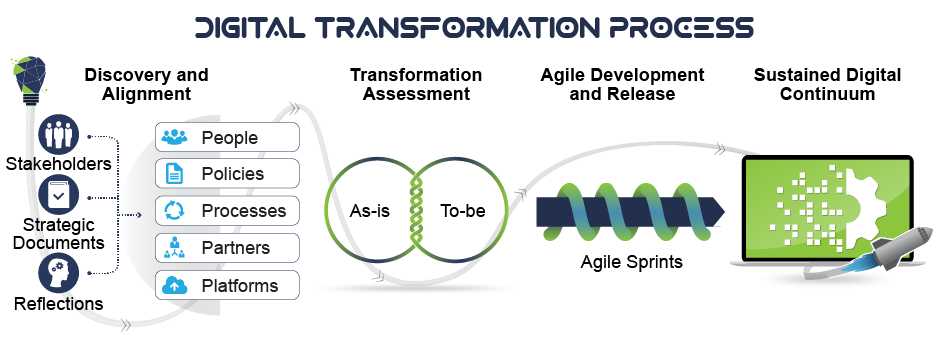The relentless evolution of technology demands organizations be ready for constant change. Case in point, over the past 18 months, we have all seen ChatGPT and other Large Language Models (LLMs) disrupt how we do a lot of things. To take advantage of this disruption and the next disruption, organizations must cultivate agility and flexibility within their infrastructure. A Plug-and-Play tech strategy is your key to unlocking that adaptability.

Future-Proofing with Plug-and-Play
Rather than investing heavily in on-premise IT assets, the Plug-and-Play approach emphasizes cloud-based subscriptions and easily interchangeable technology components. This “built to change” mindset overthrows the outdated “built to last” philosophy.
Building Blocks, Not Fortresses: Why Plug-and-Play Wins.
Imagine building your tech infrastructure like a LEGO set, not a brick-and-mortar building. With a Plug-and-Play approach, individual components (data visualization tools, CRMs, etc.) are designed for easy integration. This lets you swap them out or add new ones as your needs evolve, fostering agility and adaptability within your organization.
Where to Begin?
A successful Plug-and-Play transformation goes beyond the technology itself. To ensure lasting success, consider these key areas:

- The 5 P’s: People, policies, processes, partners, and platforms must be carefully assessed and aligned with your transformation goals. Early attention to these areas ensures smooth adoption and minimizes long-term disruption.
- Follow a Four-Step Digital Transformation Process: A structured process to go from transformation into continuum:
- Discovery and Alignment: Define your vision, assess the current state (“as-is”), and articulate your desired future state (“to-be”). Look for alignment between system solutions and organizational objectives.
- Transformation Assessment: Analyze the gaps between “as-is” and “to-be”, developing your strategy, requirements, and infrastructure plan. Mitigate risks early.
- Agile Development and Release: Execute your plan using agile methodologies, with a strong focus on quality assurance and testing. Continuously evaluate and incorporate new tools or capabilities as needed.
- Sustained Digital Continuum: Shift focus to ongoing operations and maintenance, providing support, updates, and ensuring ongoing adaptability.
Key Considerations:
- Risk Mitigation: Address potential risks like privacy concerns or integration issues early in the process.
- Stakeholder Involvement: Engage stakeholders throughout the journey for better buy-in and adoption.
- Metrics: Define clear metrics to track your progress and measure the impact of your transformation.
Real-World Implementation
Start with less critical back-office processes to build confidence before tackling core operations. Here’s how modern tech empowers your strategy:
- SaaS (Software as a Service): Streamlines deployment and updates.
- APIs: Facilitate communication between different software systems.
- Microservices: Help create modular, easily swappable components.
- AI and ML-Powered Tools: Enable faster decision-making and automation.
- LLMs (Large Language Models): Facilitate natural language interaction, content generation, and knowledge extraction.
- RAGs (Retrieval-Augmented Generation): Provide LLMs with access to external knowledge sources, enhancing their accuracy and the scope of their responses.

The Plug-and-Play Advantage
Embrace the mindset that all tech solutions are inherently temporary. A Plug-and-Play strategy lets you quickly adopt cutting-edge tools and drive better outcomes.
- The Reality of Constant Change: In today’s technology landscape, obsolescence is inevitable. What’s considered “best-in-class” today might be surpassed within months or weeks. Clinging to solutions for the sake of familiarity hampers your organization’s ability to stay competitive.
- Leadership’s Critical Role: To foster an always-changing organization, leaders must:
- Model an Embrace of Change: Leaders set the tone. Being visibly open to new technologies and experimentation signals that it’s safe for others to do the same.
- Champion Continuous Learning: Encourage employees to stay up-to-date on emerging trends and provide opportunities for skills development.
- Reward Adaptability: Recognize and celebrate those who successfully navigate change and pivot quickly when needed.
- The Plug-and-Play Advantage: A Plug-and-Play framework anticipates change. It prioritizes solutions designed for easy integration and replacement. This means your organization isn’t shackled to outdated systems, allowing you to capitalize on the latest innovations.
- Driving Better Outcomes: Flexibility drives results. By quickly adopting cutting-edge tools, you potentially:
- Boost Efficiency: Automation, AI-driven insights, and streamlined processes can significantly increase speed and productivity.
- Enhance User Experience: Whether it’s an internal system for employees or a public-facing application, modern tools often deliver a superior user experience.
Example: Imagine the impact of staying committed to cumbersome spreadsheet-based accounting versus switching to a cloud accounting platform, automating processes, and enabling real-time financial insights. The Plug-and-Play mindset allows you to make these critical updates quickly.
Key Questions for 2024 and Beyond:
- How does your strategy drive robust data-driven insights utilizing AI-backed analytics?
- Are you effectively balancing cloud, hybrid, and on-premise solutions for optimal performance?
- What percentage of your IT budget fuels innovation versus maintenance?
- How do you track the tangible impact of new technologies on achieving your mission?
- What are your plans to proactively identify and assess emerging technologies?
Remember, change is the only constant. By combining a Plug-and-Play mindset with a holistic transformation approach, you create a foundation for sustained digital agility.





